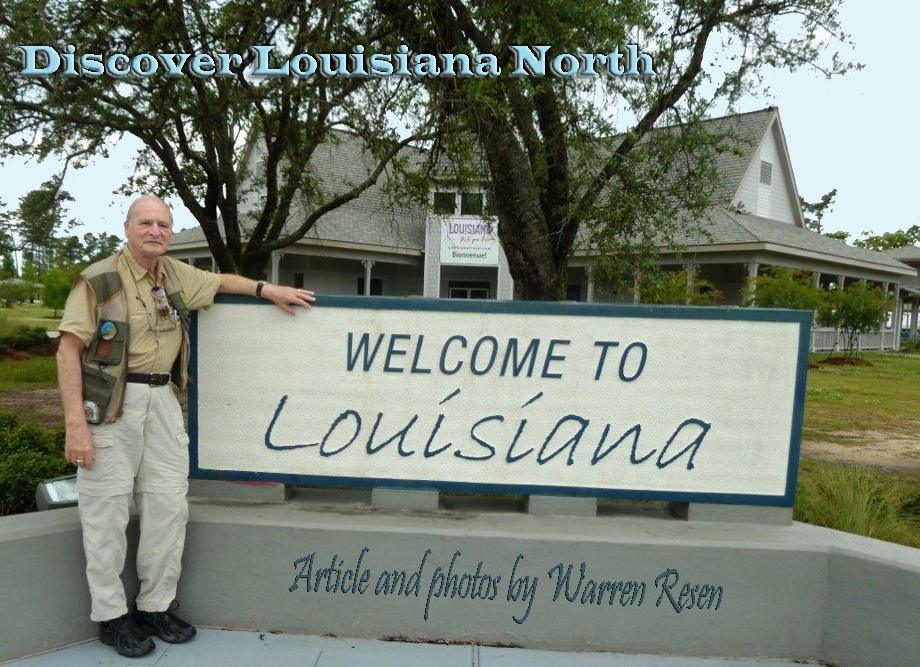
The State of Louisiana goes by many
names: The Bayou State, Pelican State, Sportsman's Paradise, Sugar
State, and Creole State among others. Rather than a case of multiple
personalities, it is a testimonial to Louisiana's diversity.
Motorists rushing to distant
destinations on I-20 in northern Louisiana unknowingly by-pass a
delightful part of our country. It is an area known as
Louisiana North,
a confederation of 29 diverse parishes.
Exiting the Interstate in the
Shreveport area and taking I-49 southeast towards
Natchitoches, travelers
enter a countryside that in many cases would be familiar to people
who lived here in the late 1800's.
Mile after mile of historic one-room
whitewashed wooden churches with their prominent bell towers appear
at almost every turn. Church bells are still rung on Sunday mornings
to call the faithful to prayer. This is an area where the words of
the Gospel Hymn, "Give Me That Old Time Religion," still ring true
today.
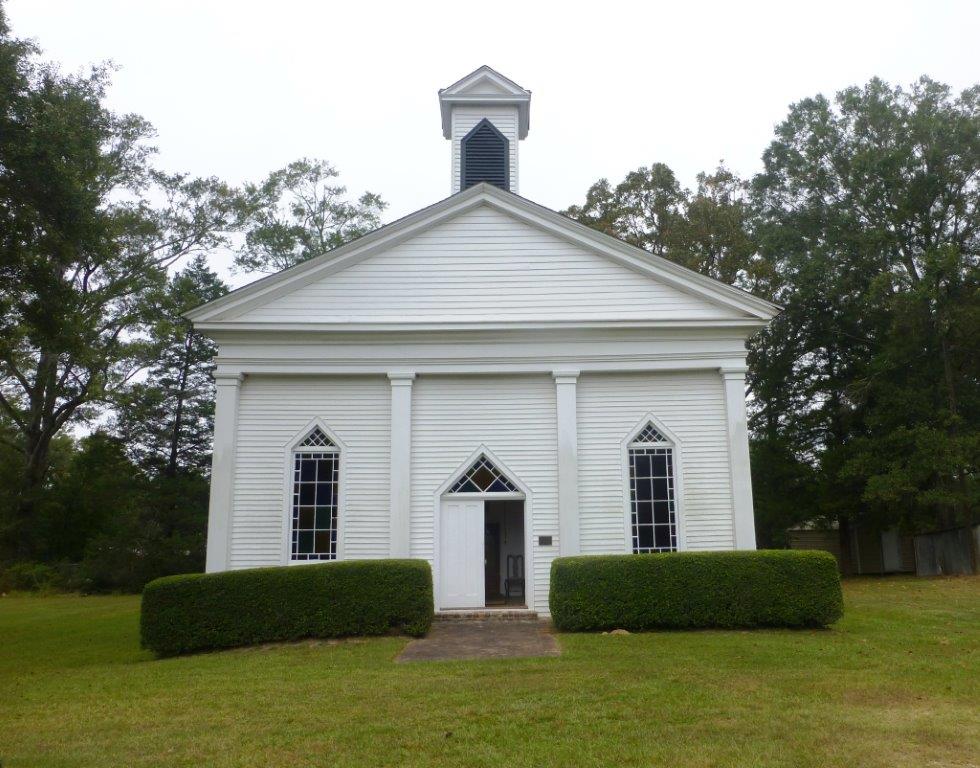
History is never far from sight when
passing old farms, general stores, and residences some in need of
TLC which frequently adds to their charm. The majority of these
strictures are still in use today. They represent a by-gone era,
but using another almost by-gone term, they offer passersby's a
"Kodak Moment."
Travelers will find the cost of
overnight stays at many of the area's unique and often historic
accommodations below what they would normally expect to pay in more
heavily traveled areas. Food, with an emphasis on traditional local
and Creole recipes, is always an important component of every event
in Louisiana. It is a gastronomic feast that always means "bring
your appetite." This is not the area for pretty little
citified salads.
A good reason to leave the Interstate
is to visit the charming city of Natchitoches. Founded in 1714, it
is Louisiana's oldest city beating New Orleans by several years and
is the oldest permanent settlement in the thirteen states included
in the Louisiana Purchase of April 1803
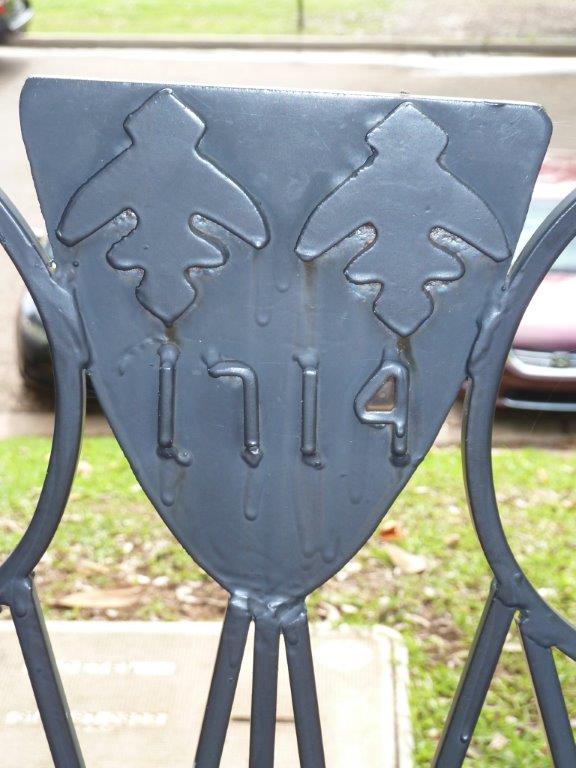
Passing the sprawling campus of
Northwestern University, you enter downtown Natchitoches on the on
the banks of picturesque Cane River, an important shipping route
during the days of King Cotton. The first glimpse of downtown evokes
images of New Orleans, its big sister 275 miles to the south. The
comparison is fleeting. This city has none of the hustle and bustle
or parking problems of New Orleans except perhaps fleetingly during
some downtown festivals.

Brick paved Front Street is the
entryway to the 33 block National Historic and Plantation District
along the banks of Cane River Lake where more than 100 historic
homes can be seen as well as French and Spanish forts. Lodgings,
B&B's, antique shops, and excellent restaurants are within easy
reach. The folks at the Convention & Visitors Bureau can
supply maps and information.
IMPORTANT INFORMATION: First time
visitors are initially confused when they hear locals talk about the
city using the local pronunciation which is "Nack-A-Tish."
Natchitoches was the location for the
filming of many scenes in the movie Steel
Magnolias, based on a true story about the citizens of this
community. Not
surprisingly a self-guided Steel Magnolias Tour Map is available at
the downtown Convention and Visitors Bureau.
A visit here is not complete without
doing the downtown Historic District Walking Trail. Winding
your way through the city will take you to rue St. Denis and the
Walk of Honor where plaques honor notables from the film industry,
arts, and literature, as well as others who have made significant
contributions to the city. It is a smaller version of Hollywood's
Walk of Fame. This area has been the location for more than 130
movies and plaques honor notables such Hollywood luminaries as John
Wayne, Julia Roberts, John Ford, Dolly Parton and many others.
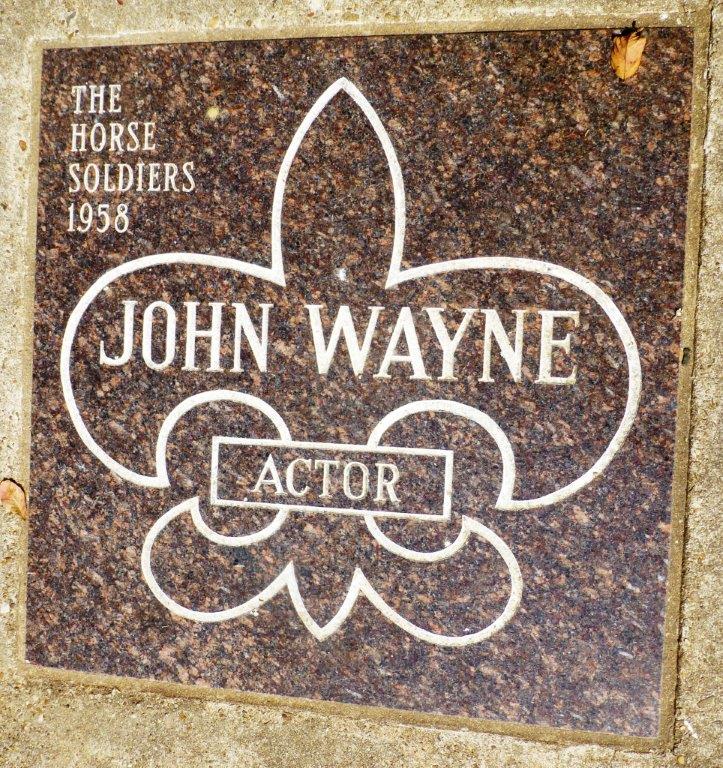
It is the distinctive architecture of the downtown's buildings with their decorative wrought iron balconies that initially gives the city of Natchitoches its New Orleans appearance. Unlike its bigger relative to the south, the atmosphere here is laid back. Citizens smile and say hello when passing and on-street parking is normally not a problem except possibly during their special festivals.
One of my favorite shops on historic Front Street is Kaffie-Fredrick General Mercantile. Founded in 1863, it is the oldest general store in Louisiana and an important landmark in the city.
Entering the front door is like stepping through a time machine.
Welcoming shoppers is an unadorned interior where the merchandise is
the focus, not fancy fixtures with goods locked behind glass
nor is there loud music blaring from speakers. Unadorned and sometimes unpainted
tables stacked high with house wares, tools, hardware, utensils,
classic toys, clothing and trinkets are instantly available for
shopper's inspection and purchase. How
refreshing.
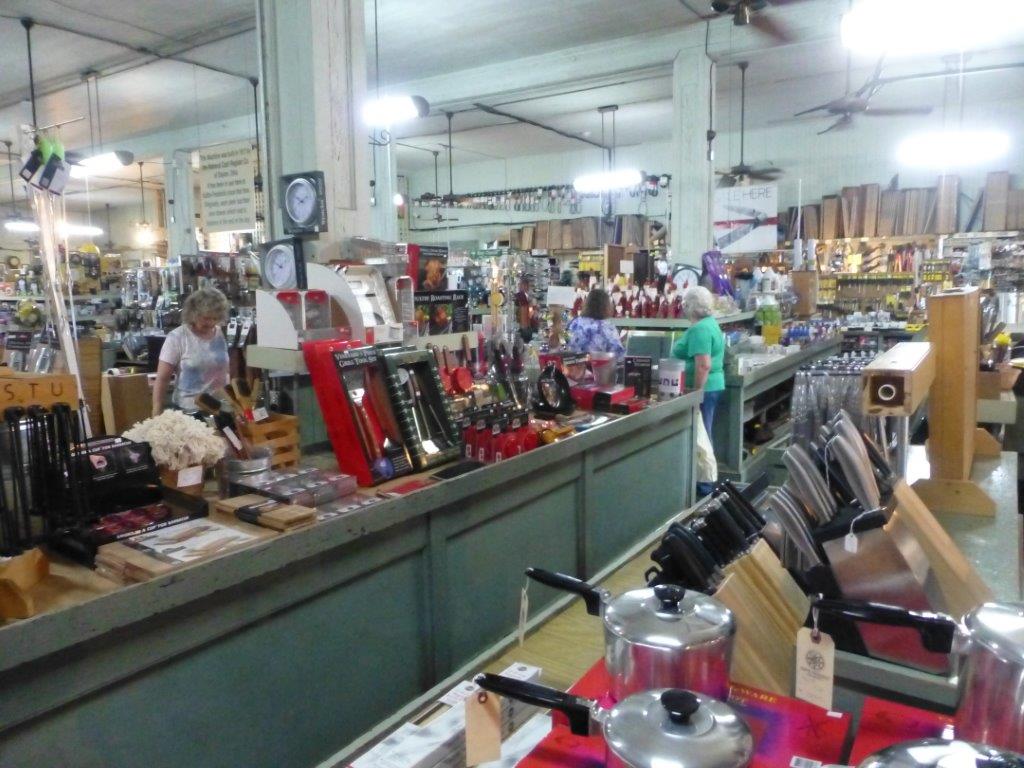
While you are downtown, visit the Lousiana
Sports Hall Of Fame & Northwest Louisiana History Museum
just down the block
from the Convention & Visitors Bureau. This architecturally award
winning building celebrates the achievements of more than 300
athletes, coaches and other sports figures of Louisiana. The history
museum section of the building highlights unique cultural traditions
from early Native American civilizations to the present time and the
building's flowing interior was specifically designed to evoke
images of the region's rivers and plowed fields.
In a state where most outsiders assume Gumbo is Louisiana's
official food, Natchitoches is famous for its meat pies which have
been awarded the title of the Official Meat Pie of the State of
Louisiana.
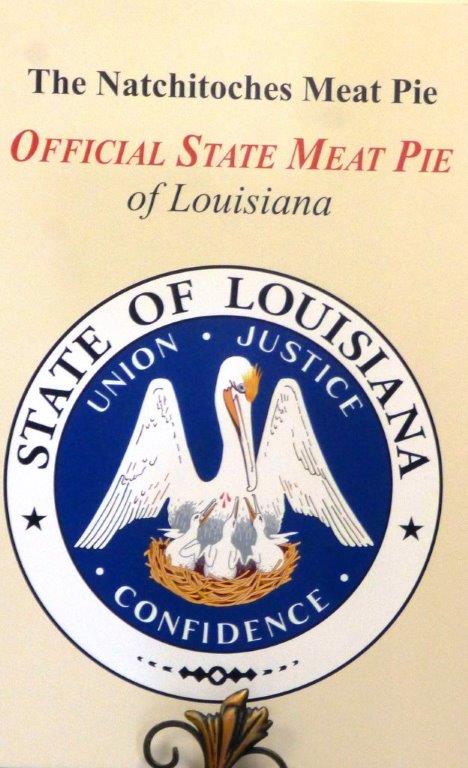
A visit to Lasyone's Meat Pie Kitchen &
Restaurant, which has been opened since 1967 in downtown
Natchitoches, will let you experience the same gastronomic treats
locals have been enjoying these many years. Lasyone's is a family
style eatery featuring local specialties that can be enjoyed in the
restaurant's unique dining rooms, ordered for
takeout, or shipped to your front door.

The area's Early American history is
most evident to visitors when taking a self-driving tour of
Cane River National Heritage
Area with its plethora of restored
plantations. This 35 mile-long river landscape is considered by many
to be possibly one of the most beautiful stretches of plantation
country in the South.
A must stop is Melrose Plantation, a
legendary plantation established by a family of color around the
time of the Louisiana Purchase. In 1796 it was originally known as
the Yucca Plantation. The
plantation's main
house, named Melrose, was built in 1833. In 1844 under, the
ownership of the Henry family, it also became a hub of art and
education.
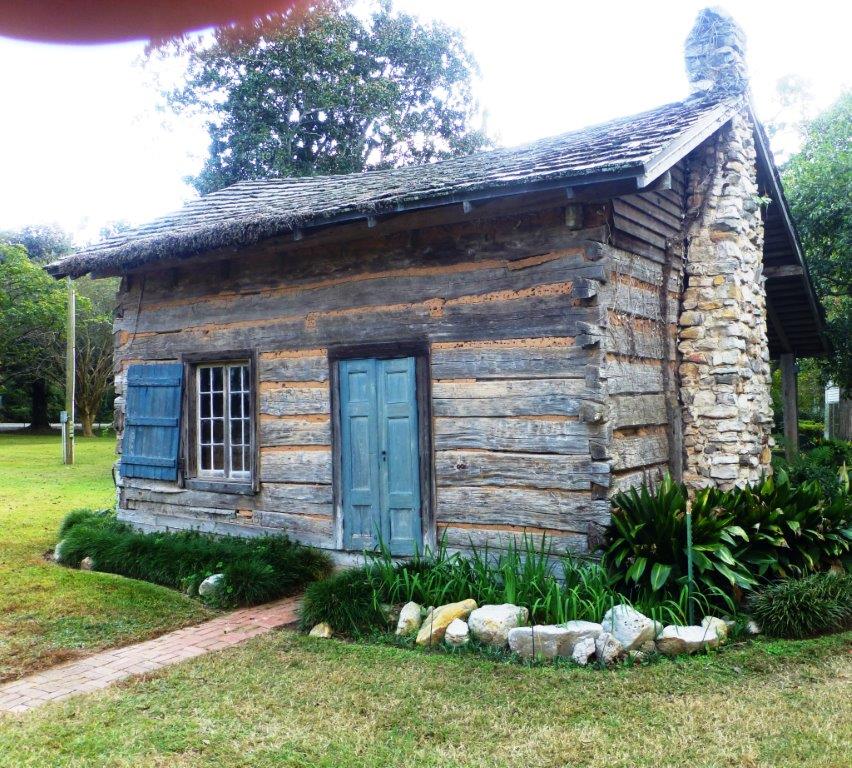
The Melrose Plantation's most famous resident was Clementine Hunter (1886 -1968) an African American field hand and cook. It was in here In her 50's that she first picked up a paint brush and began to create scenes from her memory of people, life, and scenes of the Cane River area and Melrose Plantation. (More about Clementine Hunter)
She was the first self-taught African-American artist to
receive national media attention and the first African-American to
have a solo exhibit at the New Orleans Museum of Art. Clementine
Hunter became renowned as one of the South's premiere primitive
painters and Louisiana's most famous folk artist. Many of her works
are on display at the plantation in the African House, in major
museums, and are treasured by private collectors.
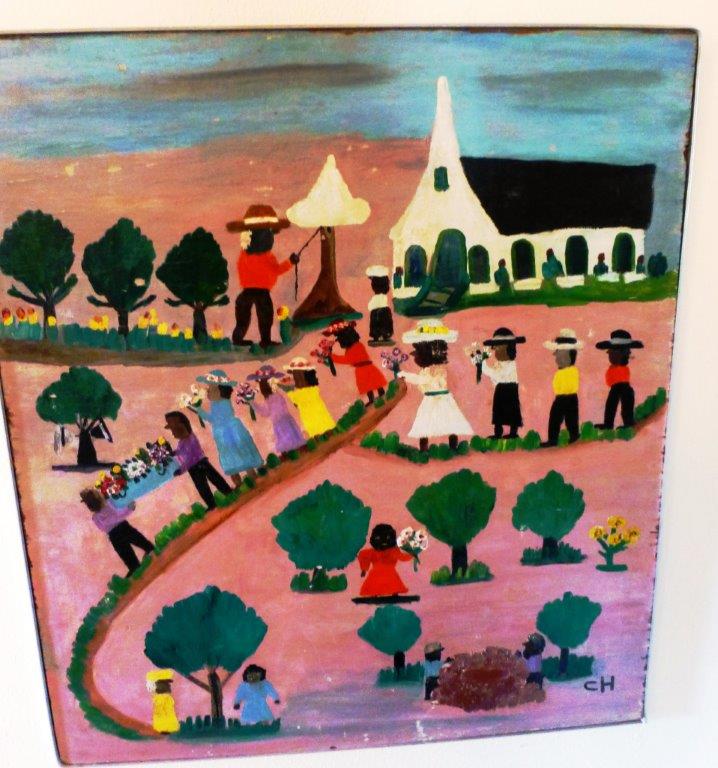
According to the National Park Service,
"In colonial Louisiana the word Creole indicated New World products
derived from Old World stock and could be applied to architecture,
livestock, food, and people." Most are familiar with Creole
food and music but are unsure of how it is applied to people.
The Park Service goes on to say that,
"Creole historically referred to those born in Louisiana during the
French and Spanish periods, regardless of their ethnicity. Creole
transcends racial boundaries. It connects people to their colonial
roots, be they descendants of European settlers, enslaved Africans,
or those of mixed heritage, which may include African, French,
Spanish, and American Indian influences."
During the Christmas Season, the owners
of some of the older historic homes observe an old Christmas
tradition of displaying their trees hung upside down from ceilings,
a custom that began in 12th century Europe. The upside
down Christmas tree was considered to be the symbol of Christianity.
The photo below, taken in the 1847 Italian Revival Soldini House,is
an example of what a decorated up-side-down tree looks like.
.
The Williams family has owned this
house since 1916. Mr. Jack Brittain, a descendant of the Williams
family, explains the tradition to visitors while also showing off
the family's extensive private collection of Clementine Hunter
paintings, one of which is visible on the wall behind the
up-side-down tree.

Northwest Louisiana with its year-around activities, good
food, friendly people, rich past and bright future should definitely
be a stop on everyone's list. It is a delightful destination for
travelers wanting to experience the gentler lifestyle of an earlier
time.
All of the information you need to make your visit memorable can be found at LouisianaNorth.com and Natchitoches.com. But remember, be prepared when you hear someone talk about NACK-A-TISH.







